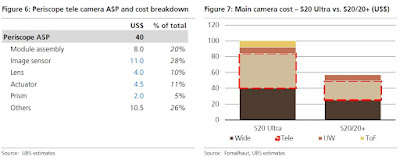"Belgian firm Cmosis built its CMV20000 sensor originally as a custom product for traffic monitoring, releasing it in the summer of 2012, around the time when Perseverance's predecessor, Curiosity, was touching down on Mars.
Early in 2013 an internal study looked at ways of modernising the engineering cameras that had flown on Curiosity, as the design of those cameras was at that time more than 20 years old.
One of the upgrades was to use the CMV20000 20-megapixel sensor in the engineering cameras, the navigation and hazard detection eyes of the rover. Guy Meynants, one of the founders of Cmosis and now working for image sensor firm Photolitics, told Imaging and Machine Vision Europe that JPL initially requested information about the sensors much like any other customer, but at that time the team at Cmosis didn't know what it would be used for.
Then, later on, 'we started to get very specific questions, which came to me,' Meynants recalled. 'There was some urgency, and I was CTO at Cmosis at the time. It was then that we started to realise it might be used for something like this [the Mars rover].'
The cameras on Perseverance have three main improvements over those that flew on Curiosity, say the JPL scientists in the Space Science Reviews paper. Firstly, the Cmosis CMV20000 sensors are colour chips, which gives better contextual imaging capabilities than the monochrome predecessors. The second improvement is that the cameras have a wider field of view – 90° x 70° as opposed to 45° x 45° – which means only five overlapping images are needed to create a 360° panoramic view (Curiosity needed 10 images to achieve the same effect). The third improvement is that the 20-megapixel sensors can resolve greater detail than the older model.
In terms of the analytical instruments onboard the rover, a combination of CMOS and CCD detectors are used. Cmosis has a sensor – CV4000, a 2k x 2k device – in the Supercam, which will examine the chemical composition of rocks and soil. Meynants said that the route to include CV4000 in Supercam was a more classical space science project, with a full qualification of the microlenses and scientific work on whether the sensor was suited to the task.
Supercam also contains a CCD from Teledyne e2v, part of Teledyne Imaging, as does the Sherloc instrument – Scanning Habitable Environments with Raman and Luminescence for Organics and Chemicals – which will look for minerals, organic molecules and potential biosignatures. Teledyne Imaging companies also produced key optical components for the Sherloc UV spectrometer, including many of the lenses and mirrors.
Both the Teledyne CCDs on Supercam and Sherloc are 2k wide by 512 pixels high. Here, sensitivity is key, in the visible spectrum but also out into the UV and infrared, according to Paul Jerram, chief engineer at Teledyne e2v.
Jerram told Imaging and Machine Vision Europe that this particular CCD has a heritage stretching back to the early 1990s. It was originally made for the Royal Greenwich Observatory as a large area detector. After that, what was then e2v made variants of the detector for spectroscopy.
A version of the sensor was used onboard Curiosity, so the work for Perseverance had to some extent already been proven. 'We provide a detector that's really efficient,' Jerram said, almost 100 per cent detection efficiency. The signal returning to the detector from pulses of laser light is not huge, and instruments like Supercam and Sherloc need a sensor with very low noise that captures all of the signal."


















































